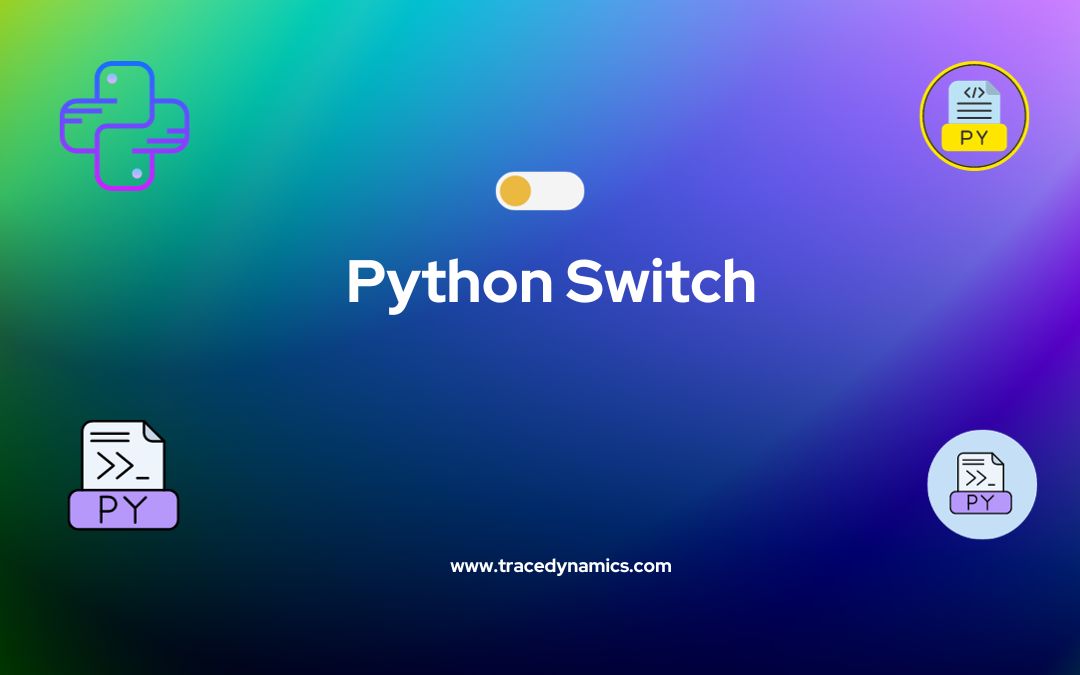The Python switch statement, a significant feature in Python 3.10, revolutionizes how developers write conditional logic in Python. This article not only covers the basics of the Python switch but also dives deep into its intricacies, offering insights into its practical applications and advanced implementations.programmers can write more efficient, readable, and maintainable code, leveraging the full power of Python 3.10’s capabilities.
Let’s explore how the switch statement in python simplifies decision-making processes in programming, comparing it to traditional methods and demonstrating its advantages in various programming scenarios. Through real-world examples and code snippets, this article aims to provide a thorough understanding of the functionality, ensuring readers are well-equipped to utilize this powerful feature in their Python projects.
Key Takeaways:
- Understanding the new match and case statements in Python 3.10.
- Historical perspective: How Python handled conditional logic before version 3.10.
- Practical implementations using elif ladders, dictionaries, and classes.
- Advantages of Python’s native switch statement over other languages.
Introduction
The concept of a switch statement in programming serves as a control flow tool, offering a more organized and readable alternative to multiple if-else statements. Python, until version 3.10, lacked a native switch-case structure, leading developers to devise alternative methods to achieve similar functionality. With Python 3.10, the introduction of match and case statements marked a significant development in Python’s approach to handling conditional logic.
Historical Perspective: Python’s Evolution and Switch Implementation
Before Python 3.10, Python developers relied on the elif keyword or functions to execute multiple conditional statements. This approach, though functional, lacked the simplicity and clarity that a native switch statement could provide.
Using elif for Conditional Logic
age = 120
if age > 90:
print("You are too old to party, granny.")
elif age < 0:
print("You're yet to be born")
elif age >= 18:
print("You are allowed to party")
else:
"You're too young to party"
Python 3.10: match and case Keywords
match term:
case pattern-1:
action-1
case pattern-2:
action-2
case pattern-3:
action-3
case _:
action-default
Working of Switch Case in Python
The switch statement in Python, like in other languages, is built around a condition and various cases. It takes a value, variable, or expression and executes the code block corresponding to the satisfied case.
Implementing Switch in Python using elif ladder
def num_in_words(no):
if(no == 1):
print("One")
elif(no == 2):
print("Two")
elif(no == 3):
print("Three")
else:
print("Give input of numbers from 1 to 3")
Using Dictionary for Switch Case Implementation
A dictionary in Python can serve as an effective way to implement switch-case functionality. Keys in the dictionary represent conditions or elements to be checked, while values hold the corresponding actions or outputs.
Dictionary with Elements as Values
def vowel(num):
switch = {
1: 'a',
2: 'e',
3: 'i',
4: 'o',
5: 'u'
}
return switch.get(num, "Invalid input")
Dictionary with Functions/Lambda Functions as Values
def add():
return n + m
def operations(op):
switch = {
'+': add(),
'-': subs(),
'*': prod(),
'/': div(),
'%': rem(),
}
return switch.get(op, 'Choose one of the following operator:+,-,*,/,%')
Implementing Switch using Python Class
class Month(object):
def month_1(self):
print("January")
def month_2(self):
print("February")
def month_3(self):
print("March")
# ... more month methods ...
def getMonth(self, no):
name_of_method = "month_" + str(no)
method = getattr(self, name_of_method, lambda: 'Invalid month number')
return method()
Advanced Switch Case Implementations in Python
Python’s flexibility allows for innovative implementations of switch-case constructs beyond traditional methods. These advanced techniques can cater to more complex scenarios and offer increased code efficiency and readability.
Using Dictionary with Nested Functions
def complex_operation():
def nested_function_1():
# Logic for case 1
pass
def nested_function_2():
# Logic for case 2
pass
switch = {
"case1": nested_function_1,
"case2": nested_function_2
}
return switch
Employing Lambda Functions for Inline Execution
switch = {
"case1": lambda x: x + 1,
"case2": lambda x: x - 1
}
Using Enums for Better Code Readability
from enum import Enum
class Options(Enum):
OPTION1 = 1
OPTION2 = 2
switch = {
Options.OPTION1: function_for_option1,
Options.OPTION2: function_for_option2
}
Integrating Match Statements in Object-Oriented Design
class MyClass:
def handle_cases(self, input):
match input:
case "option1":
self.method_for_option1()
case "option2":
self.method_for_option2()
Frequently Asked Questions
What is the switch statement in Python?
The switch statement in Python, introduced in Python 3.10, is a control flow tool that uses ‘match’ and ‘case’ keywords for conditional logic.
How does Python's switch statement differ from other languages?
Python’s switch statement, unique to Python 3.10, uses ‘match’ and ‘case’ instead of ‘switch’ and ‘case’, and doesn’t require a ‘break’ statement after each case.
Can Python switch be used with dictionaries?
Yes, Python switch can be implemented using dictionaries, with keys as conditions and values as actions or outputs.
Is the Python switch statement available in all Python versions?
No, the switch statement feature using ‘match’ and ‘case’ is only available from Python 3.10 onwards.
What are some practical applications of Python switch?
Python switch is useful in data processing, user interface management, and implementing state machines, among others.
How do you implement a switch case using a class in Python?
In Python, switch cases can be implemented using classes by defining methods for each case and using a method to select the appropriate action.
Can lambda functions be used in Python switch implementations?
Yes, lambda functions can be used for inline execution in Python switch implementations, providing a concise way to define actions.
What are the benefits of using Python's switch statement?
Python’s switch statement offers cleaner syntax, improved readability, and better organization of conditional logic compared to multiple if-else statements.
How do enums enhance Python switch case implementations?
Enums in Python provide a structured way to handle constants, enhancing code readability and maintainability in switch case implementations.
What was the common method to simulate switch cases in Python before version 3.10?
Before Python 3.10, developers commonly used the ‘elif’ ladder or dictionaries to simulate switch cases.

